
Perennial Grain Crops: New Hardware for Agriculture
Perennial grains, legumes and oilseed varieties represent a paradigm shift in modern agriculture and hold great potential for truly sustainable production systems.
In addition to identifying and developing perennial food crops, The Land Institute also conducts ecological intensification research in order to put those crop plants into diverse mixtures called polycultures that mimic the benefits found in native and natural ecosystems.
Why Perennial Grain Crops
- Perennial plants do not have to be reseeded or replanted every year, so they do not require annual plowing or herbicide applications to establish. Whereas to successfully grow annuals, farmers have to suppress or kill the vegetation (weeds) chemically or mechanically that compete with crops for sunlight, nutrients, and water, especially when the crops are seedlings. This soil disturbance has caused significant amounts of soil carbon loss (which ends up in the atmosphere as CO2), soil erosion, nutrient leakage, and changes in soil organisms.
- Perennial crops are robust; they protect soil from erosion and improve soil structure. They increase ecosystem nutrient retention, carbon sequestration, and water infiltration, and can contribute to climate change adaptation and mitigation. Overall, they help ensure food and water security over the long term.
- Many fruit, forage and some vegetable crops, including fruit trees, alfalfa, grapes, asparagus, and olive trees, are perennials that have been grown for thousands of years. The Land Institute is working to add perennial grains, legumes, and oilseed crops to the list.
- Perennial crops can free farmers from the treadmill of economic instability by significantly reducing the need for costly inputs and minimizing the operational expenses of tillage and planting. This new perennial “hardware” for agriculture stands to catalyze a rich culture around food production and supply chain development. Research is emerging to understand the social and economic strategies needed to support these new agricultural systems.”
- Given that grains make up over 70% of our global caloric consumption and over 70% of our global croplands, transitioning from an extractive annual model to a perennial model is the best chance we have to create a truly regenerative food future.
Perennialization
The second method of breeding new perennial crop species is to cross an existing annual grain crop with a wild perennial cousin. When successful, these “wide hybrid crosses” produce plants that maintain seed yield and quality similar to the annual parent while inheriting the perennial lifestyle from the other parent.
Domestication
Domestication starts with identifying perennial species with one or more desirable attributes, such as high and consistent seed yield, synchronous flowering and seed maturation, and seed retention (also called non-shattering). Next, large, diverse crop populations are grown out at The Land Institute, and plant breeders select the best individuals for the traits of interest. These individual plants are then cross-pollinated, and the resulting seeds are planted to produce the next improved breeding population.
Helping Grow Perennial Agriculture
The Land Institute is breeding new perennial grain and seed crops adapted to ecologically intensified polycultures that mimic natural systems in order to produce ample food and reduce or eliminate impacts from the disruptions and dependencies of industrial agriculture.
Join us by supporting this work with a donation to The Land Institute.


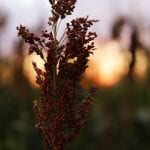 Sorghum is a tropical grass originally domesticated as a crop in sub-Saharan Africa. Like annual sorghum, the perennial hybrids maintain good seed yield, but seed size and flavor require further breeding attention. Land Institute perennial hybrids are being trialed in several sub-Saharan African countries to determine if they can persist through dry seasons.
Sorghum is a tropical grass originally domesticated as a crop in sub-Saharan Africa. Like annual sorghum, the perennial hybrids maintain good seed yield, but seed size and flavor require further breeding attention. Land Institute perennial hybrids are being trialed in several sub-Saharan African countries to determine if they can persist through dry seasons. Perennial wheat work at The Land Institute focuses on hybrids made from crossing annual wheat species – especially durum wheat used for making pasta – with wheatgrass species including intermediate wheatgrass (the same species being domesticated as Kernza®).
Perennial wheat work at The Land Institute focuses on hybrids made from crossing annual wheat species – especially durum wheat used for making pasta – with wheatgrass species including intermediate wheatgrass (the same species being domesticated as Kernza®).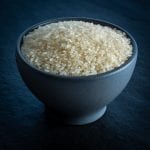
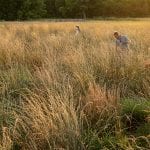
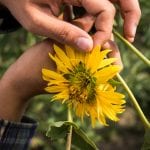 A plant in the sunflower family native to the Great Plains and other parts of North America, Silphium integrifolium is being domesticated as an oilseed crop that could replace annual oilseed crops such as sunflower and soy.
A plant in the sunflower family native to the Great Plains and other parts of North America, Silphium integrifolium is being domesticated as an oilseed crop that could replace annual oilseed crops such as sunflower and soy.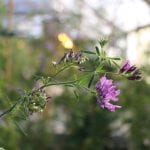
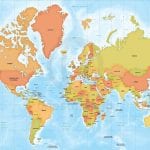 The Global Inventory Project is an ambitious, large-scale, global collaboration between The Land Institute, the
The Global Inventory Project is an ambitious, large-scale, global collaboration between The Land Institute, the